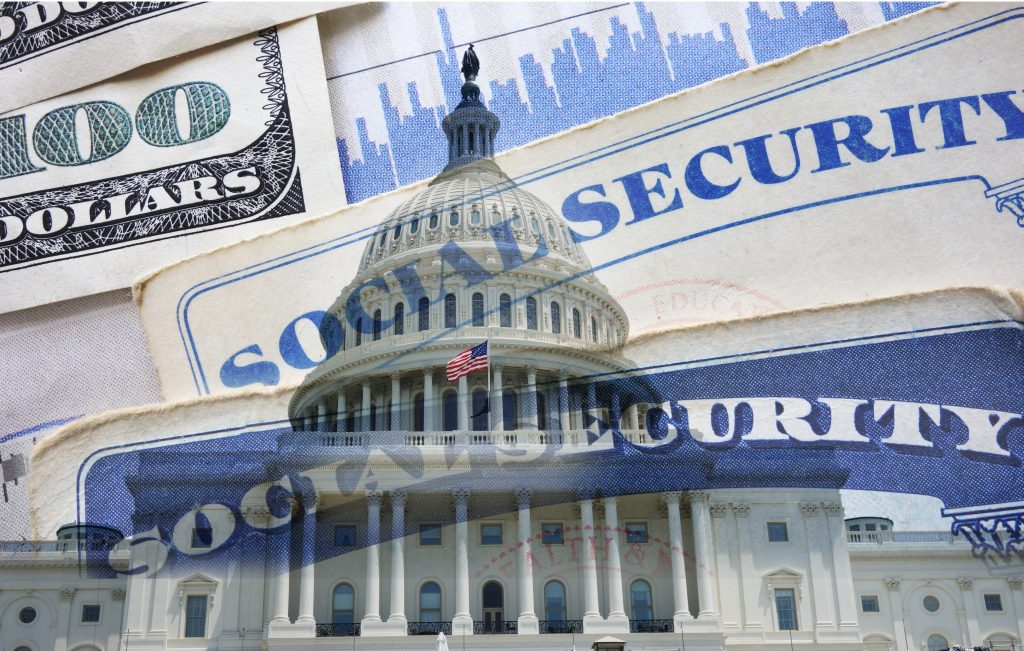In August, more than 68 million beneficiaries took home a check from America’s top retirement program, Social Security — and for a majority of retirees, this is income they’d struggle to live without.
Despite what you might have heard from a friend or read online, Social Security benefits aren’t something you receive for simply being born in the U.S. or becoming an American citizen. Benefits, including those for retired workers, survivors, and workers with disabilities, are generally earned through work.
To qualify for a Social Security payout, you’ll need to tally 40 lifetime work credits, of which no more than four credits can be earned in a given year. The amount of earned income (wages and salary, but not investment income) needed to qualify for a quarter of coverage is $1,730 in 2024. Thus, $6,920 in wages and salary ($1,730 x 4) would maximize the number of work credits you can earn this year.
While Social Security was primarily designed to be a financial rock for lifetime low earners and aging workers during retirement, it’s a program that ultimately provides benefits to those who’ve earned the requisite 40 lifetime work credits — and that includes our elected officials.

Kamala Harris delivering remarks. Image source: Official White House Photo by Lawrence Jackson.
Kamala Harris is nearing the age of Social Security eligibility
Current Vice President and Democratic Party presidential nominee Kamala Harris is one such elected official who’s in line to eventually receive a monthly Social Security check. A little over a week from now, on Oct. 20, Harris will celebrate her 60th birthday, which will put her two years shy of the initial eligibility age (62) for claiming a retired-worker benefit.
Though 40 lifetime credits are the line-in-the-sand qualifying target for all working Americans, the amount Harris (or any worker for that matter) receives will be dependent on four factors:
- Work history
- Earnings history
- Full retirement age
- Claiming age
A person’s work and earnings history are inextricably linked. When the Social Security Administration (SSA) calculates a worker’s monthly benefit, it factors in that worker’s 35 highest-earning, inflation-adjusted years. For every year less than 35 worked, $0 is averaged into the calculation.
Full retirement age refers to the age at which a retired worker is entitled to receive 100% of their monthly payout, and it’s determined by the year in which they were born. Anyone born in or after 1960, which includes presidential nominee Harris, has a full retirement age of 67.
Lastly, the age at which a worker claims their benefit has a bearing on how much money they’ll receive. Though retired workers can begin collecting their payouts at age 62, America’s top retirement program gives an incentive for patience. For every year a worker waits to claim their benefit, beginning at age 62 and continuing through age 69, their payout can increase by up to 8%, as shown in the table below.
| Birth Year | Age 62 | Age 63 | Age 64 | Age 65 | Age 66 | Age 67 | Age 68 | Age 69 | Age 70 |
| 1943-1954 | 75% | 80% | 86.7% | 93.3% | 100% | 108% | 116% | 124% | 132% |
| 1955 | 74.2% | 79.2% | 85.6% | 92.2% | 98.9% | 106.7% | 114.7% | 122.7% | 130.7% |
| 1956 | 73.3% | 78.3% | 84.4% | 91.1% | 97.8% | 105.3% | 113.3% | 121.3% | 129.3% |
| 1957 | 72.5% | 77.5% | 83.3% | 90% | 96.7% | 104% | 112% | 120% | 128% |
| 1958 | 71.7% | 76.7% | 82.2% | 88.9% | 95.6% | 102.7% | 110.7% | 118.7% | 126.7% |
| 1959 | 70.8% | 75.8% | 81.1% | 87.8% | 94.4% | 101.3% | 109.3% | 117.3% | 125.3% |
| 1960 or later | 70% | 75% | 80% | 86.7% | 93.3% | 100% | 108% | 116% | 124% |
Data source: Social Security Administration. Chart by author.
Kamala Harris has a chance to do something exceptionally rare
While most workers have the luxury of keeping their earnings history private, it’s been something of an unwritten rule for decades that presidential candidates and sitting presidents publicly disclose their federal tax filings (minus some personal information).
Somewhat recently, Vice President Harris disclosed 20 years of personal tax filings. Her adjusted gross income (AGI) never came in below $128,668 as a single filer. Following Harris’ marriage to Doug Emhoff and switching to filing taxes jointly with her husband, her AGI catapulted to north of $1 million from 2014 through 2020.
The key takeaway from Harris’s 20 years of federal tax filings is that she would have reached or surpassed the maximum taxable earnings cap every year.
Social Security is primarily funded via the 12.4% payroll tax on earned income. In 2024, the payroll tax is applied to earned income up to $168,600. This $168,600 figure is the maximum taxable earnings cap.
Social Security beneficiaries who want to receive the maximum monthly benefit from Social Security that’s available at full retirement age need to do three things:
- Work at least 35 years.
- Wait until full retirement age to begin collecting benefits.
- Reach or surpass the maximum taxable earnings cap in all 35 years taken into account by the SSA when calculating your benefit.
Although we don’t have access to Harris’ work history prior to the last two decades, the info we do have available over the last 20 years suggests that Harris is well on her way to meeting the third criterion. She’ll also have no trouble meeting the first criterion of having worked at least 35 years.
If Harris were to wait until age 67 to claim her payout, she’d likely have an opportunity to receive the maximum monthly payout from Social Security available at full retirement age. This is something only 2% of Social Security beneficiaries have achieved.

Image source: Getty Images.
An unpleasant Social Security surprise awaits Kamala Harris (and an increasing number of retirees)
While an above-average Social Security check awaits Harris in the years to come, an unpleasant surprise is also lurking. I’m talking about the dreaded “T” word… taxes.
Yes, Social Security benefits can be taxed at the federal level, as well as in nine states, depending on your provisional income — gross income + tax-free interest + 50% of Social Security benefits.
In 1983, Social Security’s asset reserves were dwindling, and the program was in dire need of reform to avoid the possibility of benefit cuts. The Social Security Amendments of 1983, signed into law by President Ronald Reagan, represent the last major bipartisan overhaul of the program. It gradually increased payroll taxation on workers and raised the full retirement age over a span of four decades. Most importantly, it introduced the taxation of benefits as a revenue-raising tool.
Beginning in 1984, up to 50% of Social Security benefits could be exposed to the federal tax rate if provisional income topped $25,000 for a single filer and $32,000 for a couple filing jointly. In 1993, President Bill Clinton oversaw the addition of a second tax tier. This tier exposed up to 85% of Social Security benefits to federal taxation for single filers and joint filers whose provisional income respectively topped $34,000 and $44,000.
Here’s the catch: Neither of these income thresholds has been adjusted for inflation since they were put into place 30 and 40 years ago. With annual cost-of-living adjustments (COLAs) increasing payouts most years, an increasingly larger percentage of retirees are being exposed to the taxation of benefits.
When Kamala Harris eventually claims her Social Security payout, there’s a high probability she’s going to owe federal taxes on the benefits she receives.
This tax is something that hits home for the current president, as well. For the 2023 tax year, President Joe Biden and First Lady Dr. Jill Biden, who file their taxes jointly, had $54,616 of their $64,254 in collective Social Security benefits exposed to federal taxation.
Although the taxation of Social Security benefits is despised by seniors, the revenue generated is simply too important, given that America’s top retirement program is facing a $23.2 trillion (and growing) funding obligation shortfall through 2098. In other words, this hated tax is here to stay.
The $22,924 Social Security bonus most retirees completely overlook
If you’re like most Americans, you’re a few years (or more) behind on your retirement savings. But a handful of little-known “Social Security secrets” could help ensure a boost in your retirement income. For example: one easy trick could pay you as much as $22,924 more… each year! Once you learn how to maximize your Social Security benefits, we think you could retire confidently with the peace of mind we’re all after. Simply click here to discover how to learn more about these strategies.
View the “Social Security secrets” »
The Motley Fool has a disclosure policy.
 fool.com
fool.com benzinga.com
benzinga.com



